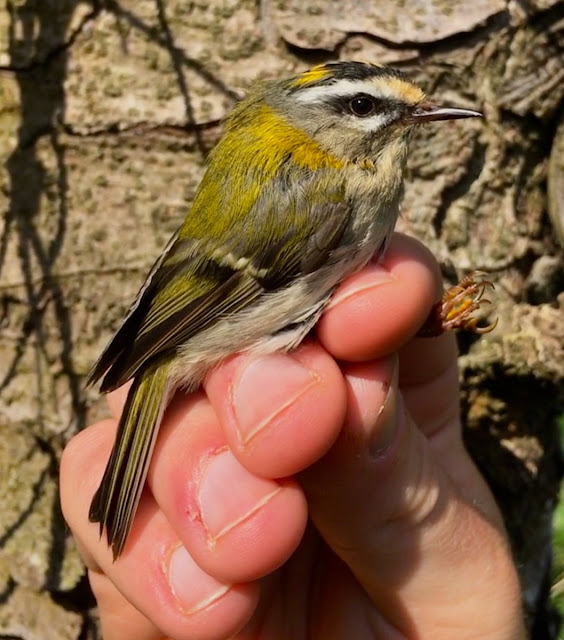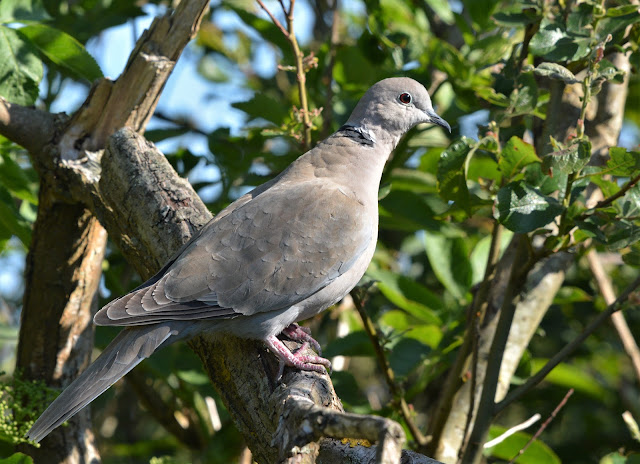Today started like any other day, low cloud in the morning
giving a misty start but this was soon burnt off as the sun came up and it
turned into a lovely day with a light NW breeze, little did we know that possibly
the avian highlight of the year would be found.
The nets were opened at the observatory around 07:30 and
left open until 12:00. After little numbers were caught the net round at 11:00
produced a something unfathomable, a large warbler was hanging in the net, it
had a grey-brown mantle, a white throat and belly with dusky flanks, a dark
face-mask and notably dark head especially around the forehead, and, on closer
inspection, a clear white iris and dark pupil giving it a mean menacing look!
An Orphean Warbler was
hanging in the net next to a re-trap Dunnock.
An Orphean Warbler. Both the assistant wardens were pinching themselves in disbelief,
but this was happening! The undertail covers were very wet so we couldn’t be
certain straight away weather it was an Eastern or a Western Orphean Warbler
but there was no sign of any chevrons from what we could see so it was presumed
a Western until we could get back to the ringing hut and check the book. After
getting back to the ringing hut and dealing with all the other birds caught, a Goldfinch, the re-trap Dunnock and a Chiffchaff, we had the bird in the hand and the Demongin book open,
the outer tail feathers were the best identification feature between the two
recently split species and our bird showed a large amount of white in the outer
most tail feather proving it was a Western Orphean Warbler. WOW. The bird was
soon released and not seen again, the same as it was not seen all morning
before being found in a net. This is an incredibly rare vagrant to Britain with
only five known previous records, it is the second record for Wales after one
in Pembrokeshire and it is a first for Bardsey Island. The species winter in sub-Saharan
Africa and summer in southern Europe where they are a fairly abundant species
but seeing it this far north is an incredible record.
 |
| Western Orphean Warbler showing the dark head and mask along with the distinctive eye |
 |
| The outer tail feather, although worn, shows a large amount of white suggesting Western Orphean Warbler |
The other sighting around today took a bit of a back seat
but a Firecrest was seen in the observatory garden, Spotted Flycatchers were now down to 12, there were also 12 Blackcaps, one Lesser Whitethroat, five
Common Whitethroats and two Swifts.
Wader numbers again steadily increased, a summer plumage Knot was
seen on the beach, our first of the year, along with 31 Dunlins, two Sanderlings,
four Ringed Plovers and five Whimbrels.


















































